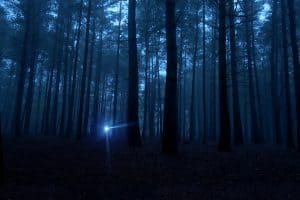A big concern for preppers and survivalists is being able to find a safe, yet reliable source of light for when the sun goes down. Since the invention of the incandescent light bulb in 1879, people have been consistently reliant on electricity to provide light. As a prepper and survivalist, you know for a fact that in a bad-case -scenario, electricity becomes unreliable. So any good prepper will be looking for other forms of lighting and they have to be safe and reliable. In that vein, what good lighting options exist?
Emergency Candles
People have been using candles for over 5,000 years, according to the National Candle Association. Candles are a good option for lighting since they’re cheap, and depending on the type, you get they can last for upwards of 120 hours. If you’re concerned about the potential health hazards of continuous candle usage in an enclosed space, there are particular kinds, like soy candles, that are smoke-free. Other types,like beeswax candles, can be reused. Not only are candles versatile but proper containers help to lessen the risk of a fire hazard.
Chemical Light Sticks
It is important to note that chemical light sticks are quite different from glow sticks. For starters, chemical light sticks last a minimum of 8 hours and can be seen for from great distances. They’re good for survivalists as they’re easy to stockpile and can last for up to four months in their containers. Not only are they a good source of light but they are useful in terms of long-distance communication between parties. Some downsides to them are that once they are activated, they stay on. If you’re aiming to stay off the radar or out of sight, chemical light sticks can give away your location.
Solar Lanterns
For survivalists, having a reliable source that does not use up a lot of resources is ideal. Solar lanterns last long, don’t need batteries and need only a few hours to recharge. Depending on the brand you get, the solar lanterns can be waterproof, so you’ll have a consistent source of light even in the rain, windy, or damp conditions. The only downside to a solar lantern is that it does not light up long distances and are generally used to light up a single area.
Flashlights and Headlamps
These two are lumped together as they both run on batteries. They are good light options for survivalists as they offer a fixed light toward distant objects so you can use them to see things better. Headlamps are convenient when you’re moving around since they’re hands-free. Flashlights and headlamps are easy to find in most hardware stores and are economical. The downside to these is the fact that batteries do eventually drain out and those can be hard to come by after things go to pot.
When it comes to choosing lighting options, it is always good to consider different kinds. That way, you can switch it around according to your needs. It also helps to have backup lighting options so you can be suitably prepared for any scenario.

